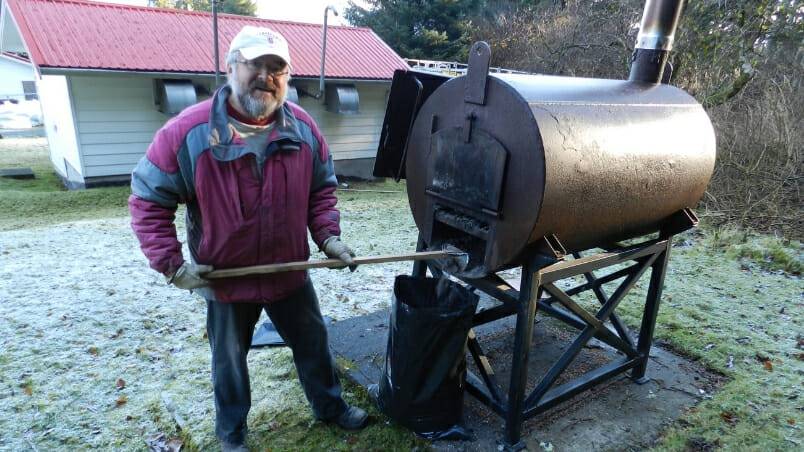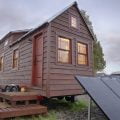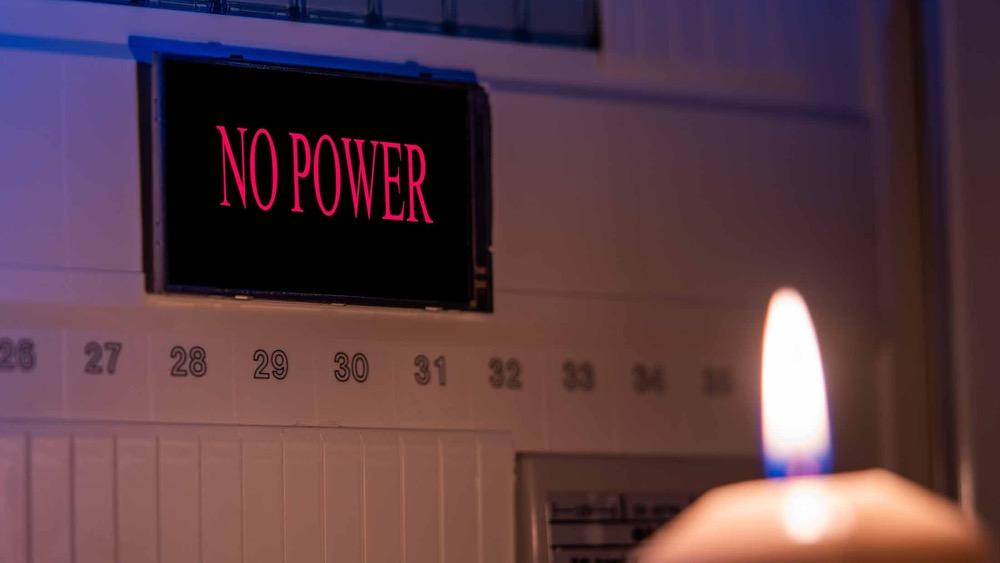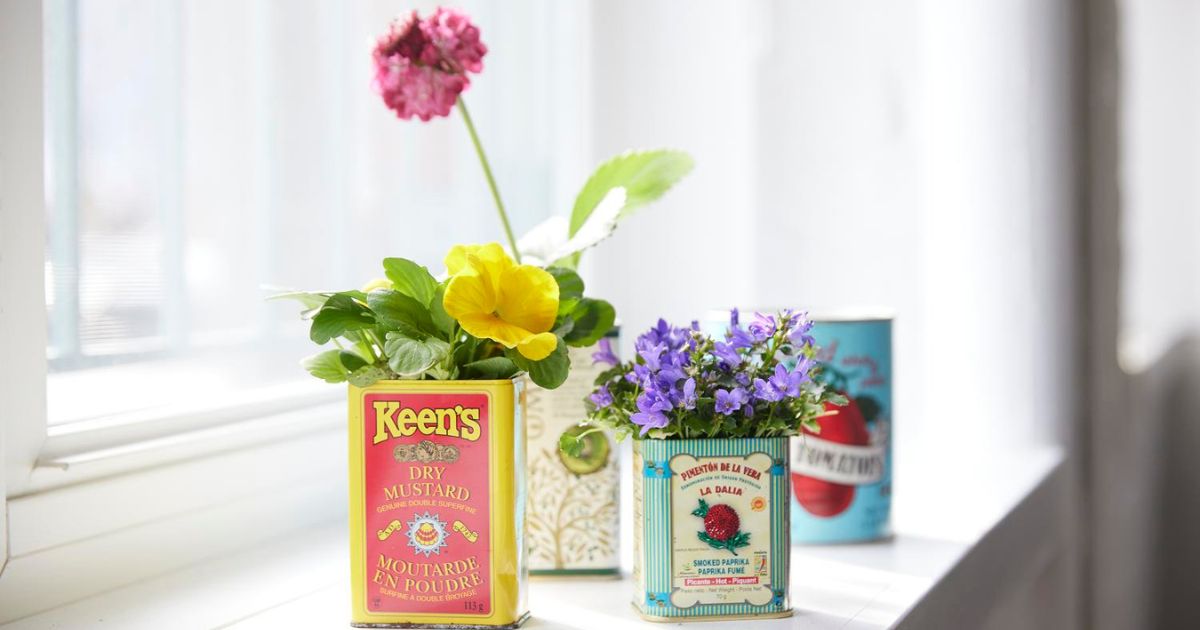Necessity is the mother of all life lessons, not to mention inventions. This unoriginal thought crossed my mind when I examined my gap-toothed grin in the bathroom mirror yet again. I have endured nightmarish dental woes—true stories that would flip the tooth fairy right over onto his/her keister. This one ranked up there with snapping a front crown off at the gum line on Christmas morning 1988.
Like other veteran lightkeepers, my husband, Jeff, and I, back at home base at the Lennard Island Lightstation near Tofino, British Columbia, have our own supply of antibiotics and painkillers on hand, should we ever be forced to wait days for a medevac helicopter, with broken limbs, abscessed teeth or other conditions pushing us well past our pain threshold. This time, another front crown had crumbled—painless, true, but I resembled an aged hockey player. It was several weeks before Christmas, and there was nothing to do for it but carry on. The principal keeper was away on extended medical leave for an unknown number of months, and we were committed to running the station during his absence.
We called our wonderful dentist in Victoria for advice, and he immediately couriered all the gear and instructions necessary for taking dental impressions to the Canadian Coast Guard’s lifeboat station in Tofino. The lifeboat crew promptly delivered said box to us, along with our mail, for which they were rewarded a zip-top bag of triple-ginger cookies. Then, we watched a YouTube demonstration several times, as advised by our dentist, whom a goodly number of lightkeepers are fiercely loyal to for his willingness to work on our teeth well into the evenings, understanding our working lives on remote islands, with infrequent annual leaves. (Plus, he gives painless needles with astounding finesse 99.9 percent of the time.) Next, we mixed up dental goop from the kit, and Dr. Jeff and I manoeuvred the first of two plates filled with the mint-flavoured stuff into my mouth.
A coast guard helicopter was, most fortuitously, on its way south, heading back to the base in Victoria with a work crew. When we explained our situation, they dropped down, kept the rotors running and took the box with my dental impressions away, all within one hour of the lifeboat crew delivering it! My dear friends in Victoria, bless them, picked it up and brought it to our dentist. A week later, when the temporary tooth was ready, my friends brought it to the base so a helicopter flying north could bring it back to me.
It fit perfectly! If I could whistle, I would have whistled while I worked, but I can’t. I could and did smile a lot, though, and counted my blessings, which is very necessary for one’s mental health out on a green rock in the North Pacific Ocean with one or two other people for company, working seven days a week for months on end. I am truly grateful to all these wonderful people: my kind dentist, multi-talented husband, understanding coast guard colleagues and helpful friends. I thanked my sheer good luck with transportation logistics, coalescing into a better-than-serviceable temporary tooth. I could grin as broadly as I usually do, without getting pitying looks from young and impressionable ship’s crew coming on shore to service the winch and high-line apparatus. Sure, I had to dice my apples and avoid corn on the cob and such, but I made do, as the pioneers used to say when surveying their haywire handiwork.
Speaking of which, Jeff has been referred to as MacGyver Jeff by more than one coast guard worker who has admired his rustic innovations for the home and workplace, as well as his funky but successful repairs using materials at hand. The term haywire outfit is used pejoratively by farmers and ranchers to refer to a ramshackle place actually or figuratively held together with lengths of haywire. The neighbourly sneers are because the temporary fix has become a permanent solution, cobbled together with substandard materials. Sometimes, though, we must resort to a quick fix if a piece of equipment fails and we need to keep it running until our qualified electricians and mechanics can arrive and replace the defective part.

Jeff takes this a step further and positively enjoys creating tools and furniture from discarded materials, driftwood and empty olive oil cans. Yes, he managed to use an empty three-litre (0.8 gallon) olive oil can to get our cellphone booster to work.
Let me explain. The booster allows us, on the western limits of Tofino’s cell tower waves, to sit in a chair facing the horizontally placed can on our windowsill and converse on our cellphone like normal people, without our calls dropping 96 percent of the time. Without Jeff’s olive oil can, the booster’s antenna in the attic kept picking up the downstairs transmitter’s signal and creating a closed loop, which meant no cell signal for us. Placing the transmitter in the can prevents the cell signal from being picked up by that antenna while allowing us to pick up the signal “shot” out of the open end of the can.
The only other places we can use the cellphone without an assist from the olive oil can are on the edge of our helipad, in one corner of our radio room or up on the western edge of our boat deck—three locations that have unimpeded access to the cell tower over on the peninsula. The tower is, sensibly, positioned to beam north and south, so the villages and resorts on the Tofino peninsula, which includes Pacific Rim National Park Reserve of Canada, all have cell service.
Last winter, Jeff and I flew up to work at Quatsino Lightstation for six weeks so the lightkeepers there could have a Christmas break with family and friends. We discovered the barrel incinerator was in need of a good cleaning. The tool for this chore was a rectangular slab of metal affixed to a heavy pole. The incinerator is round…you see the problem. Jeff reasoned that a round paint can lid could be bent in half and firmly attached to a long yet slender pole, and voilà! Round scraper inside a round container! Ergo, Bob’s your uncle, Fanny’s your aunt, and we bagged up the ashes for safe disposal in a jiffy!
One thing every light station has aplenty is driftwood: immense logs of Douglas fir, fragrant red and yellow cedar, pine, spruce, sometimes the rare red flash of arbutus and, once, a thick plank of mahogany from which Jeff made beautiful heavy chopping boards. So far he’s made nifty all-purpose side tables, an elegant driftwood coffee table, a TV stand, a tall computer desk, and a CD stand concocted from the metal straps that once secured a fuel tank, all by meticulously sanding down the wood and constructing each piece of furniture before deciding whether to apply a stain or varnish.
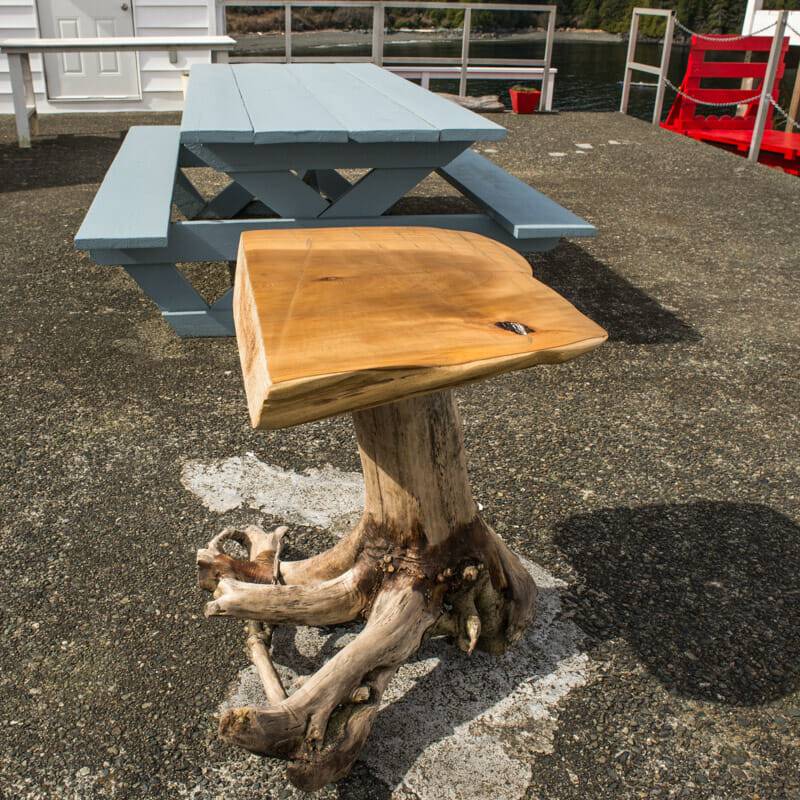
Once, he used both a chainsaw and an axe to create several three-metre (10 foot) rails from a nine-metre (30 foot) log stranded on our shores. The rails formed a “berry corral” to contain an unruly patch of wild blackberries. We prune them ruthlessly in midwinter and water them during summer droughts in order to maximize their luscious berries. But they are thugs, in the plant category, and they intend to take over the world, or at least muscle in and slurp up the nutrients from nearby raspberry and blueberry beds on stealthy reconnaissance missions, unless their canes are held up and held back, hence the handcrafted driftwood corral.
Meanwhile, I seek out the desiccant packs from vitamin bottles, put them on a windowsill to soak up sunlight, and then pop them into little plastic bags of heritage garden seeds I’m saving. I reuse these packs to absorb moisture in containers of rice and salt and anything else our humid climate clumps up and turns to mould. I also cut empty two-litre (half-gallon) cartons of milk in half, fill them with sterile soil mix and create perfect transplanting containers for tomatoes, cucumbers and peppers. I reuse them at least two or three times, giving them a good wash and sun-drying in between.

Now I have egg cartons saved for the rum balls I’ll need to start making soon for Christmas gift boxes. I use pinking shears to cut out squares of red and green transparent gift wrap and another inset square of regular wax paper, which protects the rum ball from the colourful plastic. Festive…and excellent travel containers by the dozen or half-dozen.
Not being able to run down to the hardware store or the craft store—or any kind of store, come to think of it—means relearning how to use what we already have and examining every floating object with an eye to its potential uses. Composting, sorting our recyclables into large bins, and burning what is burnable means reducing our garbage output, which can only be removed by ship once or twice a year. Reduce, repurpose, restore and even rejoice…all in a day’s work!
I am a writer, of fiction, poetry and children's books, living on the Lennard Island Lightstation at the entrance to Clayoquot Sound, near Tofino, BC. I am qualified as an Assistant Lightkeeper and often work relief at this and other lighthouses. The time I have to myself when I am not working has allowed me to complete my novella for children, The Village of Many Hats (Oolichan: 2012), my Canadian Odyssey novel for adults, Penny Loves Wade, Wade Loves Penny (Oolichan Books: 2010), and my children's book, Singing Away the Dark (Simply Read Books; illustrated by Julie Morstad: 2010). In September 2015, after seven years of living and working at more than a dozen B.C. lighthouses, Harbour Publishing will release my first book-length non-fiction work, Light Years: Memoir of a Modern Lighthouse Keeper.

